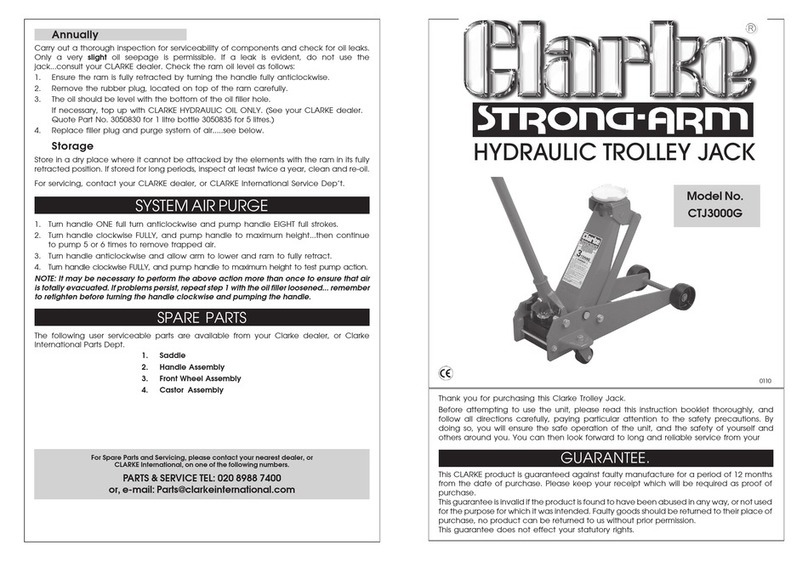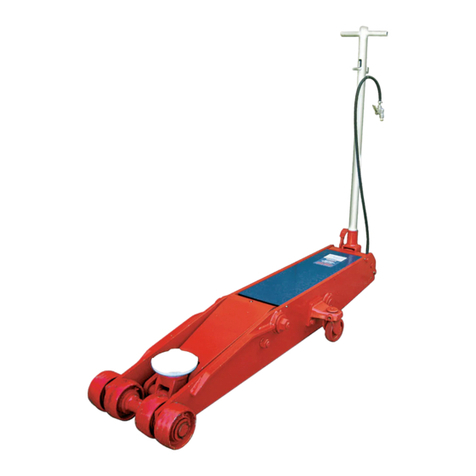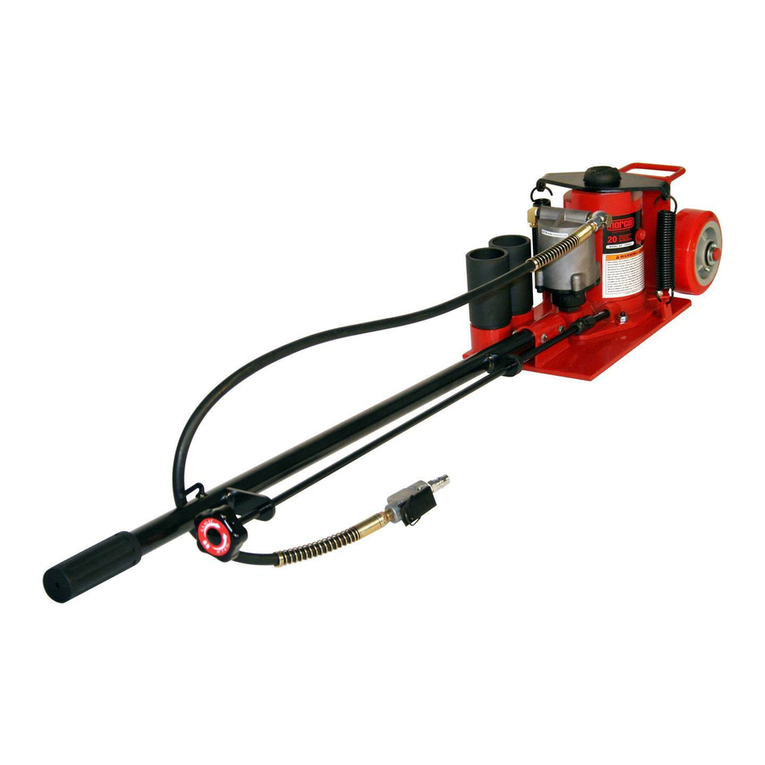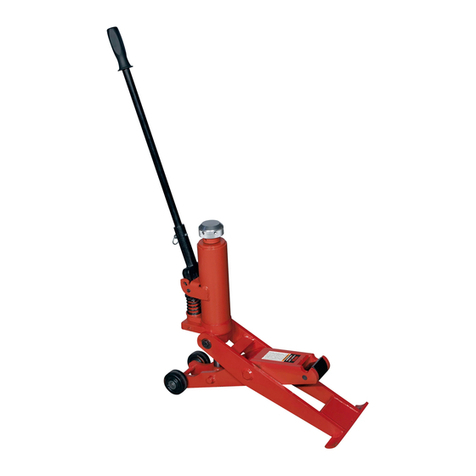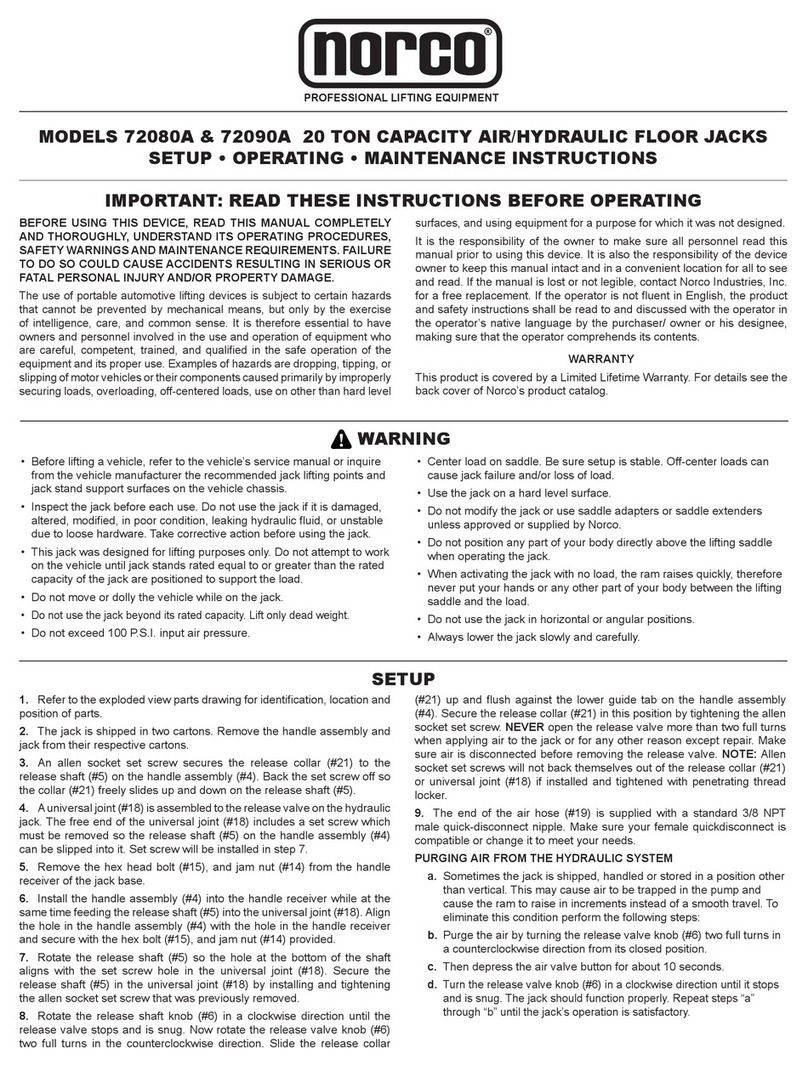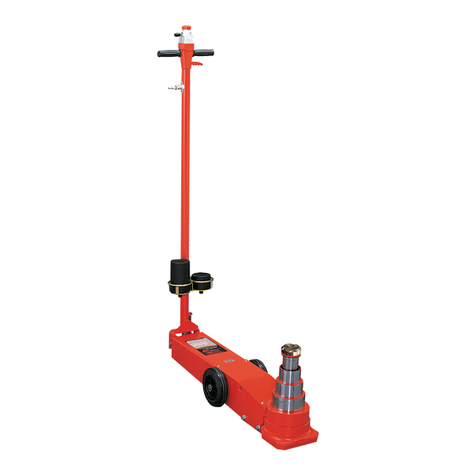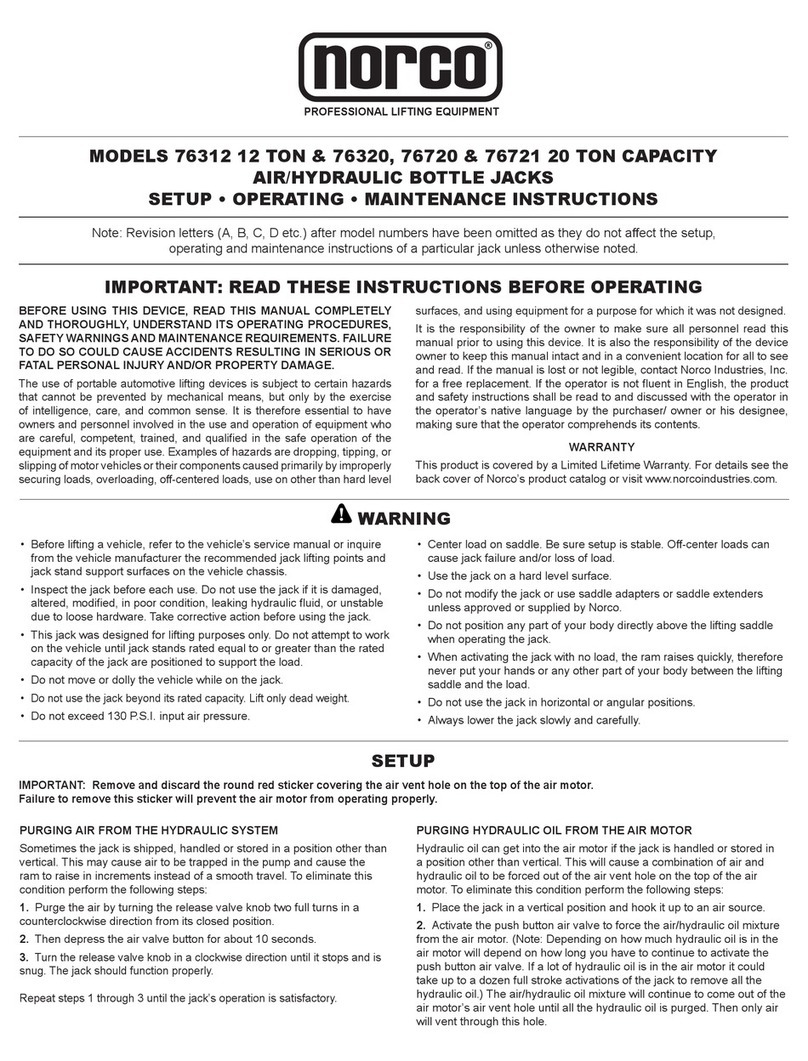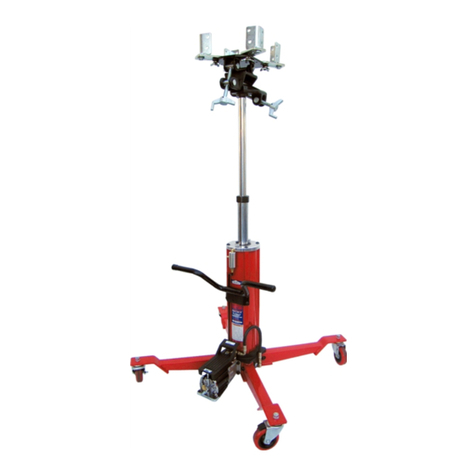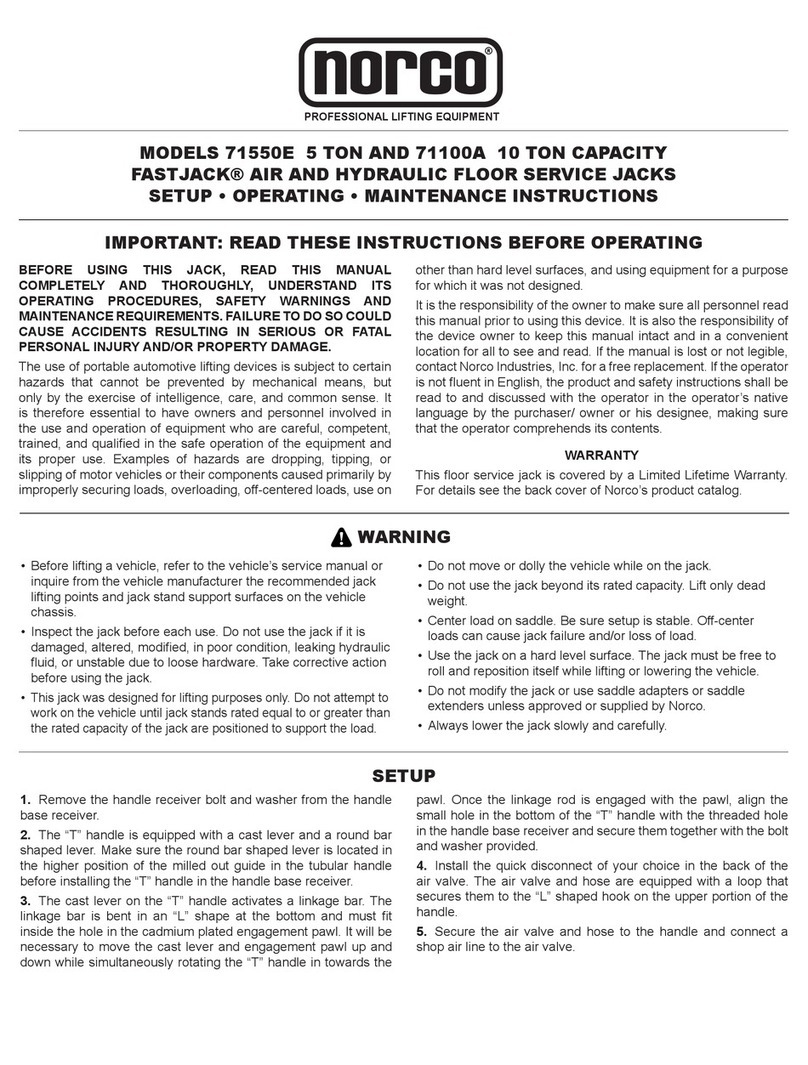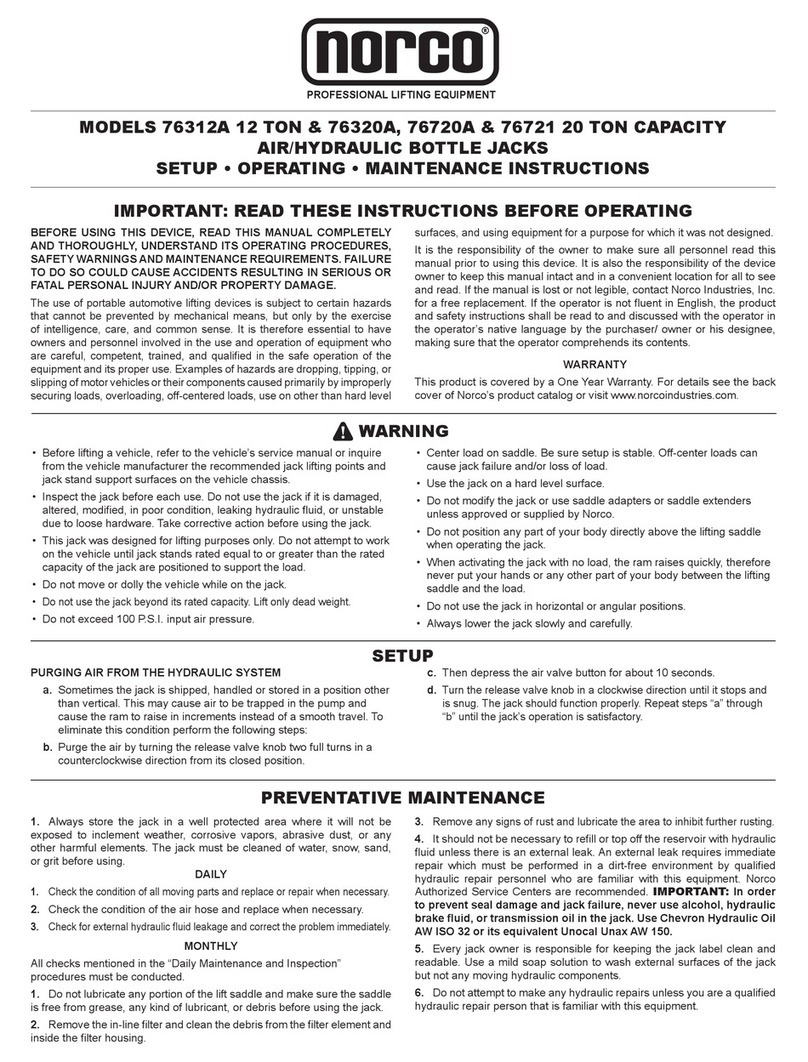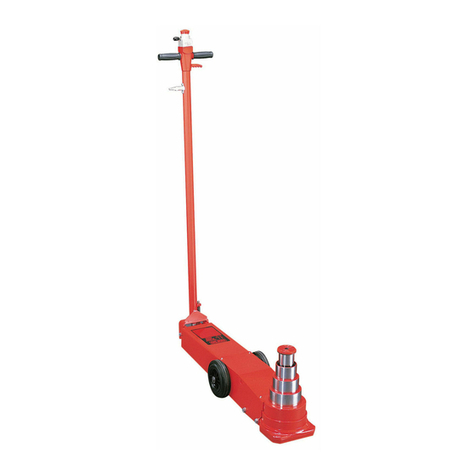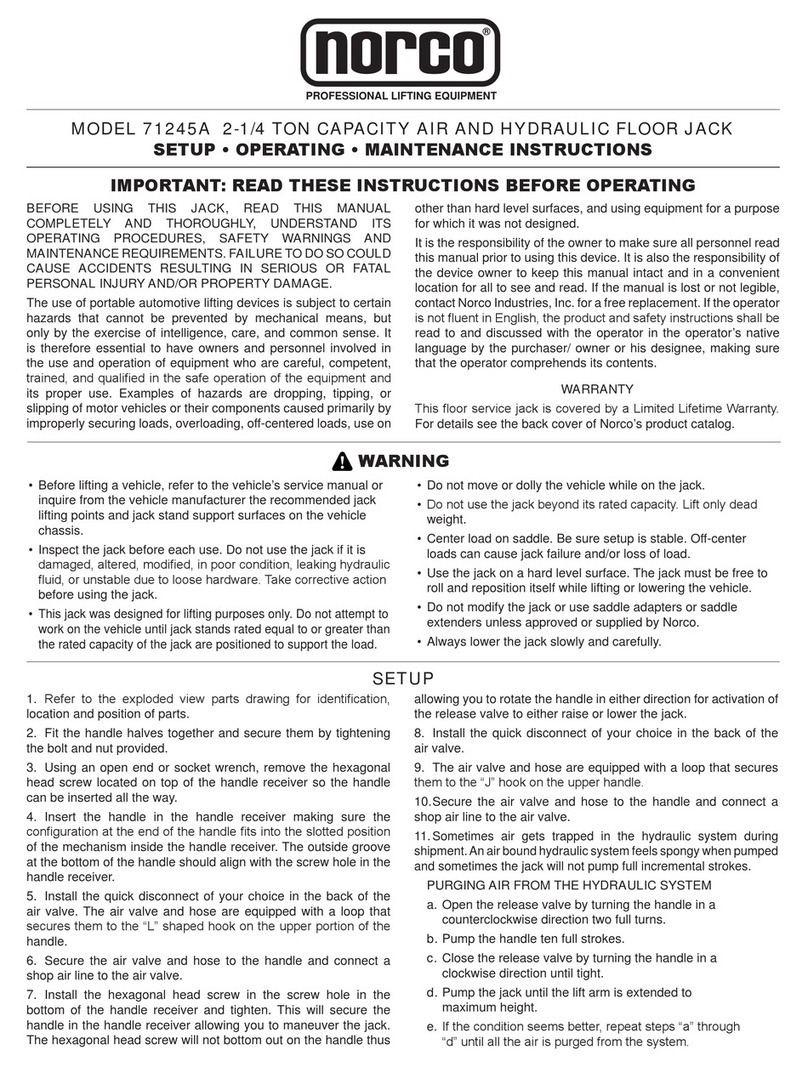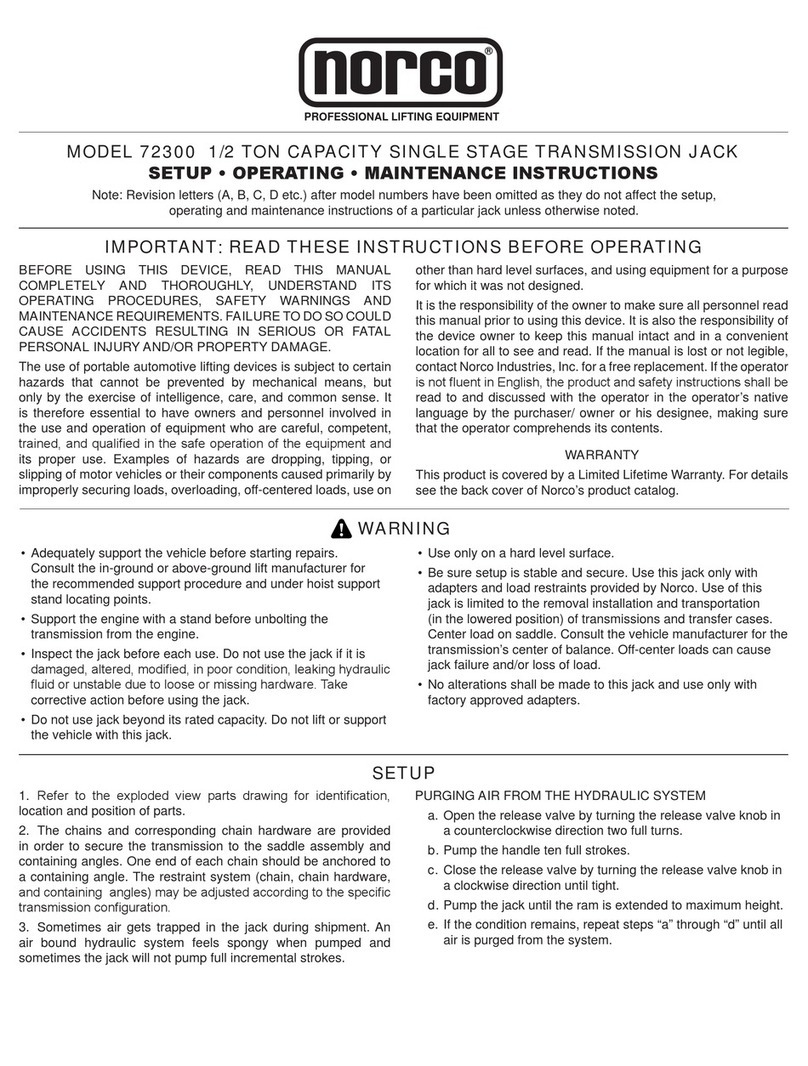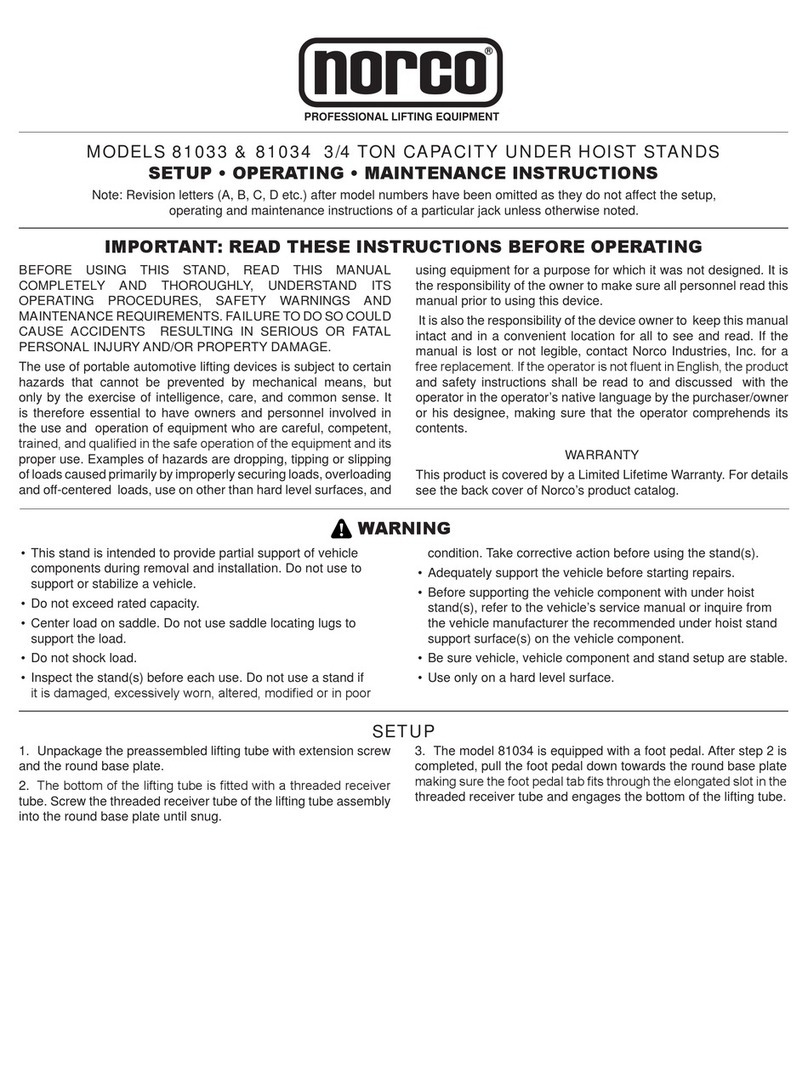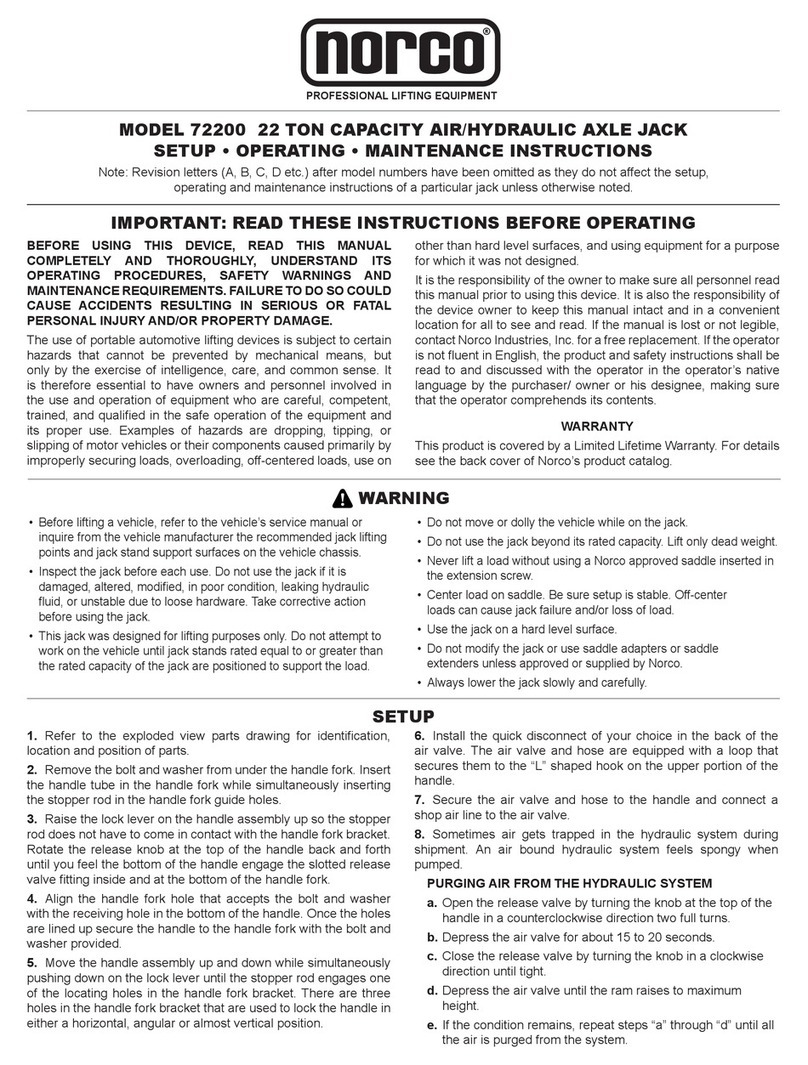
OPERATING INSTRUCTIONS
1. Become familiar with the two position air valve. Depressing the
air valve lever closest to where the shop air hose is connected to
the valve will raise the ram for lifting. Depressing the air valve lever
in the opposite direction will lower the load.
2. IMPORTANT: Before lifting load, become familiar with the
use of the jack’s ram tube, saddle tube, extension tube and pins
provided. While jack is pressurized a sudden loss of load will
cause ram tube, saddle tube and/or extension tube to rise with
sucient force to cause severe personal injury and/or property
damage. One pin is used for positioning the extension tube or the
saddle tube in the ram at the desired height. The pin should be
put through the desired hole in the extension tube or saddle tube
leaving enough pin exposure on either side for the pin to rest in the
half cutout holes in the top edge of the ram tube.
3. With the jack in the lowered position, push the jack under the
vehicle. IMPORTANT: Use the manufacturer’s recommended
lifting procedures and lifting points before lifting loads. Position the
jack at the designated lift point. Estimate the required ram travel to
raise the vehicle to the desired height. If the desired vehicle height
exceeds the entire ram travel, adjust the saddle and/or ram tube(s)
to make up the dierence.
4. Chock the vehicle’s tires that will not be lifted o the ground
prior to lifting the vehicle and if available, apply the emergency
brake or any other method of braking.
5. Depress the air valve lever to raise the saddle close to the
designated lift point. Make sure the designated lift point is at,
parallel to the ground and free from grease, any kind of lubricant,
or debris. Do not use the saddle’s locating lugs to lift or support
the load.
6. It will be necessary to use an input air pressure of 172 P.S.I
(82990) or 186 P.S.I. (82992) to achieve the full lifting capacity.
Once the saddle is properly aligned with the designated lift point
proceed to lift the vehicle to the desired height. During lifting, inspect
the position of the jack in relation to the ground and the saddle in
relationship to the load to prevent any unstable conditions from
developing. If conditions look like they are becoming unstable,
slowly lower the load and make appropriate setup corrections after
the load is fully lowered.
7. When the vehicle is lifted to its desired height, immediately
place jack stands in the designated locations recommended by
the vehicle manufacturer to support the load. Adjust the stands’
support columns up as close to the designated vehicle support
points as possible. Although jack stands are individually rated, they
are to be used in a matched pair to support one end of a vehicle
only. Stands are not to be used to simultaneously support both
ends or one side of a vehicle. Depress the air valve very slowly
to gently and slowly lower the vehicle onto the jack stands. Make
sure the vehicle is safely supported by the jack stands’ saddles
and not the locating lugs of the saddles. Inspect the relationship
of the jack stands with the ground and the jack stand columns
and saddles with the vehicle to prevent any unstable conditions.
If the conditions look unstable, depress the air valve very slightly
to gently and slowly raise the vehicle o the jack stands. Make
the appropriate setup changes and slowly and carefully lower the
vehicle onto the jack stand saddles.
8. In some situations, this jack can be used as a jack stand
but should be used in a matched pair to support one end of a
vehicle only. Jacks used as jack stands are not to be used to
simultaneously support both ends or one side of a vehicle. In order
to use this jack as a jack stand, the second pin provided should
be put through the ram tube leaving enough pin exposed on either
side of the ram tube to rest on top of the cylinder sleeve when the
air is slowly released for lowering. The air in the cylinder should
be completely released when the pin is resting on the cylinder
sleeve. Regardless of using this jack for lifting purposes or jack
stand purposes, make sure the setup is stable. If the jacks are
used in pairs, it is important to remember the lifting of the load is
not synchronized and the operator should be very careful to lift one
jack at a time in reasonably short increments to prevent unstable
conditions.
9. After work is done, depress the air valve to raise the vehicle
just high enough to clear the jack stand saddles. Be sure load is
stable. If it is not, lower the load back onto the jack stands. Make
appropriate setup corrections and repeat the step again. Remove
the jack stands from under the vehicle being very careful not to
move the vehicle. After the jack stands are removed, very slowly
and carefully lower the vehicle down to the ground.
REPAIR SERVICE
If your Norco product requires service or repair, contact the Norco
Customer Service Department for the location of the nearest Norco
Authorized Service Center.
Norco Industries, Inc.
365 West Victoria St.
Compton, CA 90220
(310) 639-4000 • Fax: (310) 639-7411
www.norcoindustries.com
It will be necessary to provide the Norco Authorized Service Center
with a copy of the bill of sale if requesting warranty repair. If the
authorized service center determines your product is eligible for
warranty repair, the repair will be made at no charge and returned
freight prepaid. The cost of non-warrantable service, repair, and
return freight is the customer’s responsibility.
1. Always store the jack in a well protected area where it will not
be exposed to inclement weather, corrosive vapors, abrasive dust,
or any other harmful elements. The jack must be cleaned of water,
snow, sand, or grit before using.
2. The jack must be lubricated periodically in order to prevent
premature wearing of parts. A general purpose grease must be
applied to the axle where the wheels rotate and a very thin coat on
the ram. Do not lubricate any portion of the lift saddle and make
sure the saddle is free from grease, any kind of lubricant, or debris
before using the jack.
3. An air leak requires immediate repair which must be performed
in a dirt-free environment by qualied hydraulic repair personnel
who are familiar with this equipment. Norco Authorized Service
Centers are recommended.
4. Every jack owner is responsible for keeping the jack label clean
and readable. Use a mild soap solution to wash external surfaces of
the jack but not any moving components. Contact Norco Industries
for a replacement label if your jack’s label is not readable.
5. Inspect the jack before each use. Do not use the jack if any
component is cracked, broken, bent, shows signs of damage, or
leaks air. Do not use the jack if it has loose or missing hardware
or components, or is modied in any way. Take corrective action
before using the jack again.
6. Do not attempt to make any repairs unless you are a qualied
repair person that is familiar with this equipment.
PREVENTATIVE MAINTENANCE
82990 / 82992


